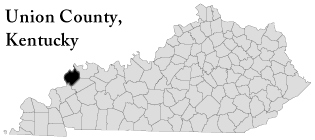BY Mark Marraccini
FRANKFORT, Ky. – The Kentucky Division of Forestry and the Kentucky Department of Fish and Wildlife Resources have jointly acquired nearly 2,500 acres in Union County at the confluence of the Ohio and Tradewater rivers. The property will become the state’s newest wildlife management area (WMA) and state forest.
The 2,484-acre site near Sturgis is a portion of one of the largest private landholdings in Kentucky. Purchase of the property – known locally as the Alcoa Property, or more recently as the Kimball Property – was possible only through the cooperation of private, public and non-profit agencies. It completes the first of a two-phase project to protect the area.

The property will provide public recreational opportunities for hunting, fishing, hiking, canoeing, wildlife viewing and other activities as a wildlife management area. The property also will be managed to provide watershed and water quality protection; protection and recovery of endangered, threatened and rare species; preservation of existing cultural and geological treasures – and a sustainable forest. It will be permanently protected from development and agricultural conversion.
The entire property was purchased in early 2009 by an investment fund managed by The Forestland Group with cooperation from The Conservation Fund and the Kentucky Department of Fish and Wildlife Resources (KDFWR). The Conservation Fund partners with community, government and corporate organizations to help them fulfill their conservation priorities. The purchase of the entire property by The Forestland Group’s investment fund enabled KDFWR and the Kentucky Division of Forestry (KDF) to acquire and protect this tract.
State Forestry and Kentucky Fish and Wildlife assembled $6,681,780 (including administrative fees) to purchase the tract. Kentucky’s congressional delegation helped secure $3.25 million in federal money through the U.S. Forest Service’s Forest Legacy Program (FLP), the most significant share of the project.
The necessary non-federal matching funds were supplied from a variety of sources. The Nature Conservancy, one of the nation’s largest environmental non-profit organizations, assisted in obtaining funds from Duke Energy and the Crounse Corporation.
Duke Energy, a generator and distributor of electric power and natural gas, provided $1.75 million. Its funds became available as part of a consent decree requiring it to fund supplemental environmental mitigation projects. Crounse Corporation, an industry leader in river transportation, contributed $50,000.
“What is unique about this project is the size of the acquisition and the number of public and private partners that had to successfully work together to permanently protect this incredibly beautiful part of Kentucky,” said Terry Cook, state director for The Nature Conservancy. “Public and private monies are limited, but by working together, we still can have incredible success.”
State Forestry utilized $1 million of its Kentucky Heritage Land Conservation Funds. These funds are derived from nature license plate sales, environmental fines and a portion of the unmined minerals tax.
The Indiana Bat Conservation Fund supplied $580,000 because this forested tract provides valuable habitat for this federally-endangered species. Kentucky Fish and Wildlife paid the various administrative fees.
“The Division of Forestry is very excited about this new wildlife management area and state forest,” said State Forestry Director Leah MacSwords. “This joint venture conserves a valuable forest ecosystem and showcases the importance of a well-managed forest.”
Kentucky Fish and Wildlife Commissioner Dr. Jon Gassett said the acquisition is an example of groups working together to benefit the public. “We have partnered closely with The Conservation Fund almost a quarter-century to help secure lands in Kentucky for public outdoor recreation,” he said. “They have protected nearly seven million acres across the country, and they were instrumental in helping us protect such Kentucky lands that are now Peabody, Obion and Sloughs WMAs.”
Ray Herndon is director of the Lower Mississippi Region for The Conservation Fund. “This project demonstrates a relatively new but growing model for conservation where forest management organizations – like The Forestland Group – are helping to conserve land for public outdoor recreation,” he said. “The success of this partnership has facilitated the protection of a property that is a true natural gem for the Commonwealth. The new WMA is a win-win for Kentucky because it will support and create outdoor recreation related jobs and provide new hunting and fishing opportunities for sportsmen and women.”
The property will be jointly managed as a wildlife management area and a state forest, using the same goals as the Knobs and Marrowbone areas. State forest properties use the ecosystem management approach to ensure biological diversity and sustainable use. These areas are working forests with demonstration areas to promote good forestry practices.
Kentucky Fish and Wildlife and the Kentucky Division of Forestry are developing a management plan for this area that will include the necessary regulations. The area will be officially open to the public later this year.
Media Contact: Mark Marraccini 1-800-858-1549, ext. 4425


Be the first to comment